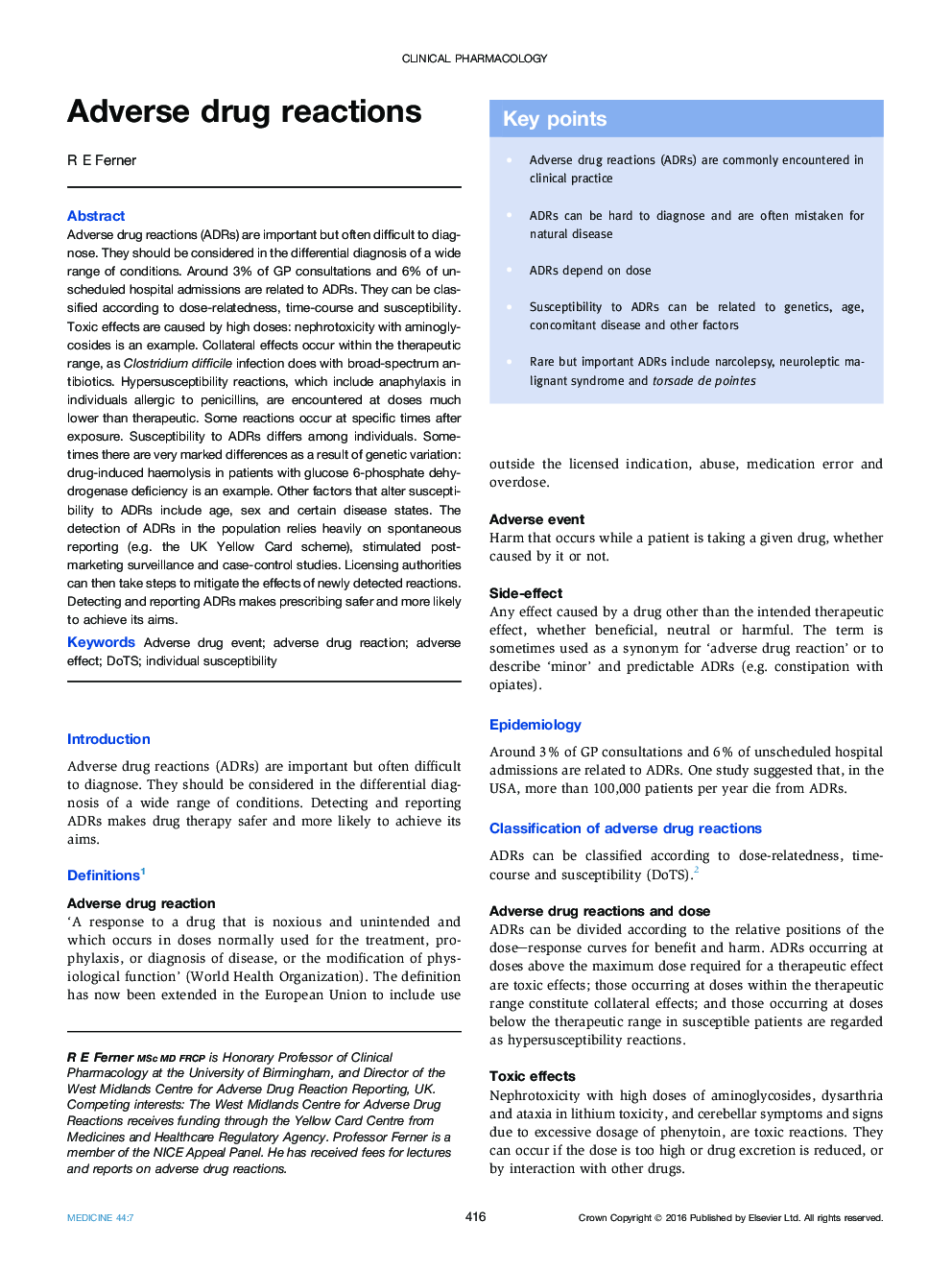| کد مقاله | کد نشریه | سال انتشار | مقاله انگلیسی | نسخه تمام متن |
|---|---|---|---|---|
| 3806094 | 1245270 | 2016 | 6 صفحه PDF | دانلود رایگان |
Adverse drug reactions (ADRs) are important but often difficult to diagnose. They should be considered in the differential diagnosis of a wide range of conditions. Around 3% of GP consultations and 6% of unscheduled hospital admissions are related to ADRs. They can be classified according to dose-relatedness, time-course and susceptibility. Toxic effects are caused by high doses: nephrotoxicity with aminoglycosides is an example. Collateral effects occur within the therapeutic range, as Clostridium difficile infection does with broad-spectrum antibiotics. Hypersusceptibility reactions, which include anaphylaxis in individuals allergic to penicillins, are encountered at doses much lower than therapeutic. Some reactions occur at specific times after exposure. Susceptibility to ADRs differs among individuals. Sometimes there are very marked differences as a result of genetic variation: drug-induced haemolysis in patients with glucose 6-phosphate dehydrogenase deficiency is an example. Other factors that alter susceptibility to ADRs include age, sex and certain disease states. The detection of ADRs in the population relies heavily on spontaneous reporting (e.g. the UK Yellow Card scheme), stimulated post-marketing surveillance and case-control studies. Licensing authorities can then take steps to mitigate the effects of newly detected reactions. Detecting and reporting ADRs makes prescribing safer and more likely to achieve its aims.
Journal: Medicine - Volume 44, Issue 7, July 2016, Pages 416–421
